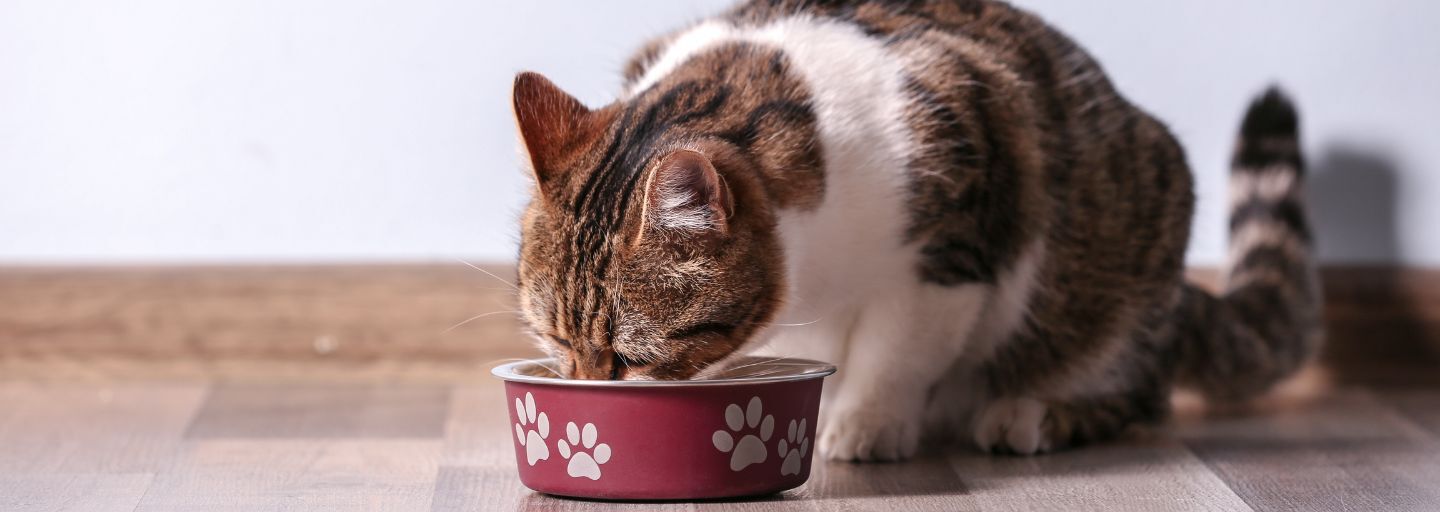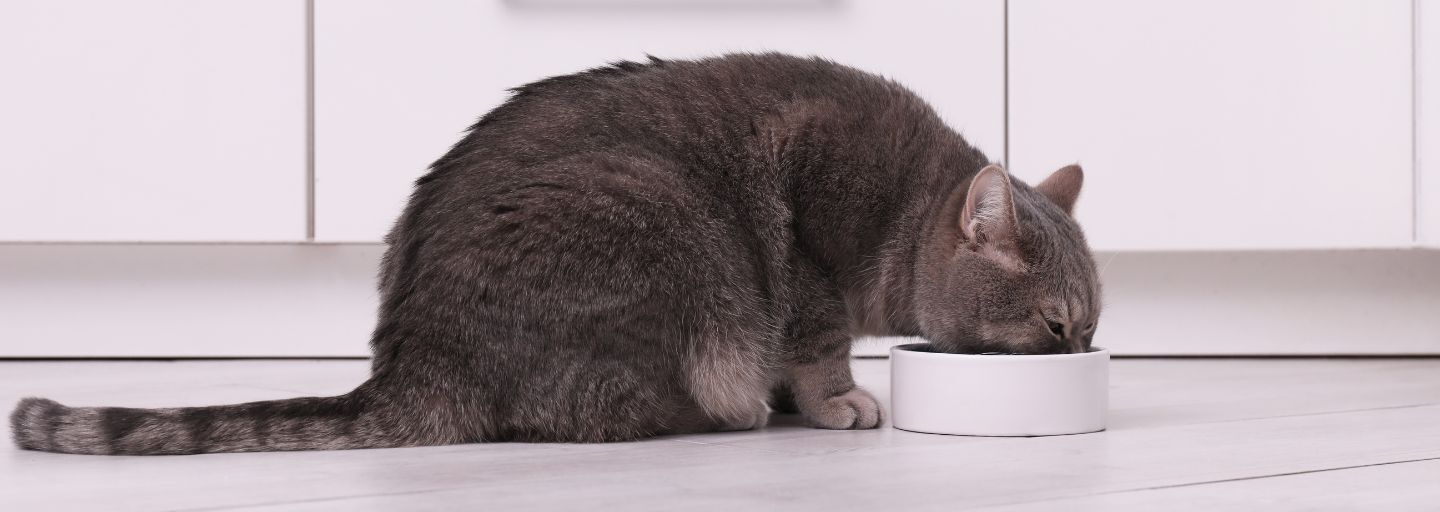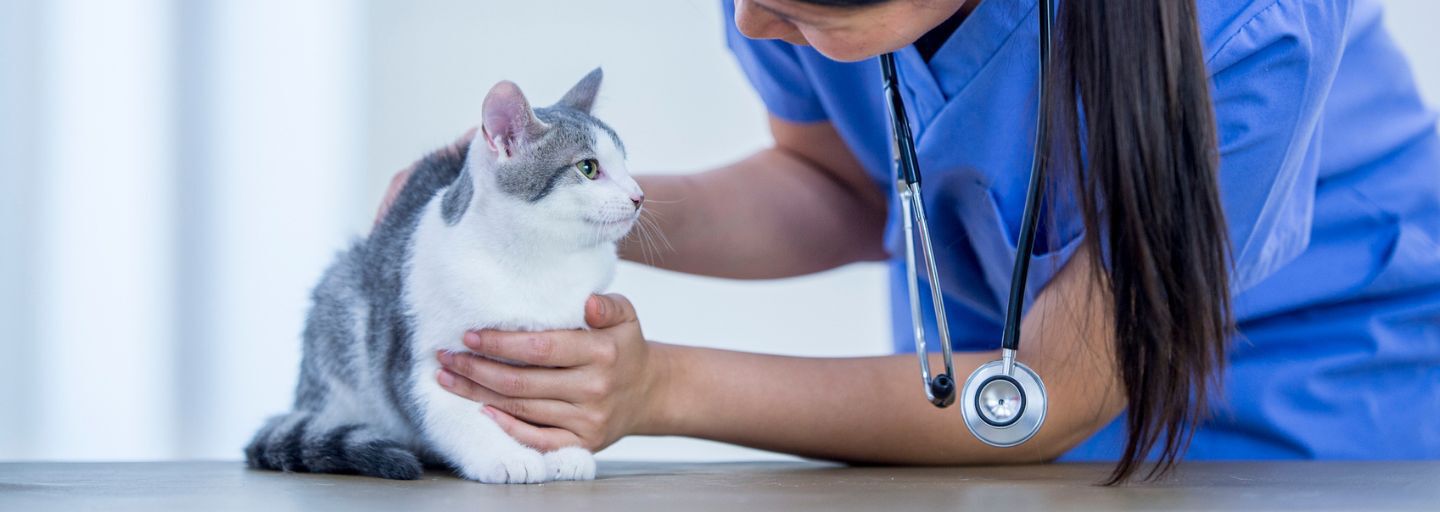As your cat reaches maturity at about 12 months, it's time to settle into a regular feeding routine.
The Diet of an Adult Cat
For a healthy pet, your cat's diet needs to include the right balance of the six major nutrient groups: proteins, fats and oils, minerals, vitamins, carbohydrates, and water.
Any good quality manufactured pet food should provide your cat with this basic nutritional balance. Many are also designed to more accurately fit your cat's specific needs. For example, if your cat is relatively inactive and indoors, you might consider feeding her a special 'light' formula to avoid weight gain.
Unless your cat's circumstances change dramatically, you can continue to follow the same adult feeding routine until your cat reaches seniority.
What to Feed?
You can feed your cat wet or dry food, or a mixture of both, depending on their preference. For example, some cats like to be fed wet food in the morning but snack on dry food during the day.
If you choose dry food, expect your cat to chew it more actively, eat it over a longer period of time, and drink more water. Dry food stays fresh all day so leave it out for your cat to snack on. Unlike dogs, cats prefer to crunch on their dry food and generally find it less attractive when soaked.
Alternatively, if you feed your cat moist food, expect them to eat more in one sitting and drink less. Don't leave wet food out for longer than 24 hours.
Serve all food at room temperature to ensure your cat can taste and smell it properly. You may need to warm up any food stored in the fridge for up to two hours. It's possible to microwave foods for a short time but be careful of hot spots. Generally, avoid serving food that is too hot or too cold.
Fresh Water – Not Milk
Fresh, clean drinking water should always be available for your cat in a large metal or ceramic bowl. This helps to keep the kidneys healthy and reduce the risk of any urinary tract infections.
Contrary to popular belief, cow's milk actually isn't good for cats as most cats lose the ability to digest lactose shortly after weaning. Make sure you only feed specially formulated 'cat milk'. Treat milk as a food and reduce the amount of solid food you feed your cat accordingly.
Meat-Eaters
Unlike dogs, which can live quite happily on a balanced vegetarian diet, cats will go blind, suffer other debilitating conditions, and ultimately die if fed only a vegetarian diet. Cats are obligate carnivores – eating meat is necessary for survival!
Treats and Snacks
Despite the temptation to feed your cat scraps from the dinner table, human foods are high in calories and lack many essential nutrients. Doing so risks overfeeding or upsetting the balance of your pet's diet.
Generally speaking, manufactured treats are a far healthier alternative. Carefully formulated to taste great and complement main meals without upsetting the nutritional balance, many even include nutritional 'extras' such as improved dental care. Remember, when you do treat, always reduce your cat's main meal by an equivalent calorific amount.
How Much?
Follow the feeding guide on the back of the pack, but remember the guide is only there to give you an idea. Every cat is an individual and the most important thing is to keep your cat lean and healthy.
When and How to Feed
If cats had their way, you would be feeding them 13-16 small meals a day, each one providing about the same amount of calories as a mouse!
Of course, this is can be a tad inconvenient. Cats are essentially creatures of habit, it's best to stick to a feeding schedule – feed your cat at the same place at the same time every day.
Choose a reasonably quiet area, away from the hustle and bustle of daily life. It's always a good idea to feed on a surface that is easily cleaned, like a tiled floor or a mat. Place feeding bowls away from the litter tray and, if you have two cats, keep the bowls a reasonable distance apart to avoid confrontations or bullying.
Changing Diet
Cats have a very different digestion to ours, which can be easily upset when you change their food in any way.
Make the transition gradually, slowly increasing the amount of the new food over a period of at least seven to ten days, so your pet can adjust. Don't worry if your cat has an upset tummy at the beginning as this is normal.
Overweight Cats
Adult cats have a natural tendency to put on weight. Overweight cats are more likely to develop diabetes, heart and respiratory problems, bladder stones, and arthritis.
If weight is a growing concern, try a specially formulated 'light' product. Light cat food is lower in fat but still contains all the necessary vitamins and minerals your cat needs.
PURINA Brands for Adult Cats
PURINA offers a variety of dry and wet complete products, specialist and veterinary brands, plus complementary snacks and treats. Whatever your and your cat's preference, we are certain to offer a taste and nutritious range.







